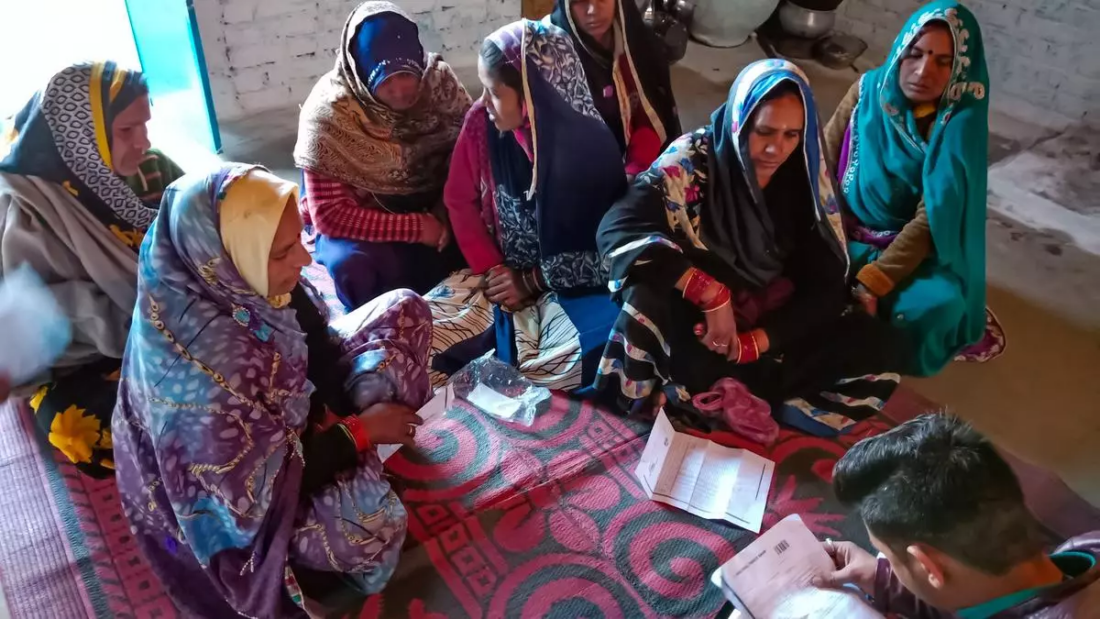-1,048.90
-345.55
+ 190.00
-283.00
-2,026.00
-1,048.90
-345.55
-345.55
+ 190.00
+ 190.00
-283.00
Get businessline apps on
Connect with us
TO ENJOY ADDITIONAL BENEFITS
Connect With Us
Get BusinessLine apps on Comments
READ LATER
Do not kill the goose that lays the golden egg, goes the takeaway from the tale about a goose and its greedy owner, who eviscerated it to get hold of all the golden eggs that he thought were inside its belly. The precarious state of today’s microfinance (MFI) lenders is not so different from that of the owner, the golden goose being India’s lucrative MFI market. The MFI industry is in a lot of stress today owing to multiple factors. But the misery is largely brought upon by the players themselves, as a consequence of aggressive push for growth and margins with insufficient risk controls.
In our bl.portfolio edition dated November 3, 2024, we had given insights on warning signals from the sector following the release of Q2FY25 results and how this could impact private banks with exposure to this segment. Now as earnings season is underway, lot more insights can be gleaned from the Q3 FY25 results that will be reported by banks and NBFCs. In this edition, we take stock of the listed NBFCs that have significant exposure to the sector and what investors should watch out for.
As the MFI industry largely caters to the credit-starved rural population, it is also a space that is underpenetrated by mainstream banks (excluding small finance banks), which have a market share of about 33 per cent (as per a report by CRIF High Mark, a Credit Information Company).
MFI lending, or any kind of lending for that matter, is a simple game, if one can answer three questions right – whom to lend, how much to lend and at what rate. The sector being cyclical, it could be susceptible to adverse events, including climate related too. But the fact that the gross NPA (GNPA) ratios of most of the lenders are at their peaks in over six quarters, sends a message that they may not have answered the three questions right.
Top reasons for repayment challenges, as cited by MFI lenders, include erratic trends in income, excess rainfall, heat wave and attrition affecting collections. Yet the fundamental cause seems to be the aggressive push for growth and higher margin, and throwing caution to the wind.
The gross loan portfolio (GLP) of all MFI lenders has grown from ₹2.32 lakh crore as of FY20 to ₹4.43 lakh crore as of FY24 at a rate of 18 per cent compounded (Source: CRIF High Mark). The growth rate for NBFC-MFIs has been at a higher 24 per cent. Such growth resulted in lending to overleveraged borrowers, meaning companies were lending fresh loans to borrowers who already had other loan(s) subsisting. As of Q2 FY25, about 8 per cent of the total MFI portfolio is represented by loans to borrowers who are indebted to five or more lenders. And this is the section that has the most delinquencies, going as high as 22 per cent on a PAR 31-180 basis (PAR – portfolio at risk; loans overdue for more than 30 days but not exceeding 180 days).
In October 2022, the RBI deregulated the interest rates that can be charged for MFI loans. This was done in good faith that the competitive forces in the space would lead to lower rates. Unfortunately, that has not transpired. Instead, the yields of NBFC-MFIs have gone up, while the cost of funds has remained largely constant. Observe the spread (yield on loans minus cost of funds) broadening in the infographic.
Former RBI Governor Shaktikanta Das called rates of 25 per cent are usurious for people of small means and that some lenders were not transparent about the penalties in case of default. In fact, the central bank in late-October 2024, banned Asirvad Micro Finance (subsidiary of Manappuram Finance) and Arohan Financial Services from disbursing fresh loans after it found the spreads to be excessive and not in adherence with regulations. Following the lifting of ban on Arohan in early January, the ban on Asirvad was also lifted recently, after the entities made satisfactory moves to fall in line with the regulator’s guidelines.
A key issue for which the lenders can’t be faulted though, is the expectation of loan waivers among the borrowers, especially around election times. Managements contend that this discourages even those borrowers who are regular in their repayments to default.
Based on data from CRIF High Mark, we analysed and ranked States on criteria mentioned in the infographic. States such as Rajasthan, Odisha, Madhya Pradesh and Uttar Pradesh rank high in terms of worst delinquencies. These States witnessed Assembly Elections in the past couple of years. They also feature in the top 10 States by size of MFI portfolio and are key geographies for the listed NBFCs we analysed.
Consequently, collection efficiency (roughly, percentage of money collected compared to instalment due) declined and so MFI players scaled back on fresh sanctions. Disbursals at the industry level during Q1 and Q2 of FY25 dropped 31 per cent and 13 per cent quarter over quarter. GLP, too, dropped 6.5 per cent from FY24 to ₹4.1 lakh crore.
As the chaos unfurled, a couple of months ago, the MFIN (Microfinance Industry Network), a self-regulatory organisation for entities in this space, introduced stricter underwriting norms, building on the guardrails brought in July, to be given effect from January 1, 2025. Key ones include limiting lender associations (number of lenders the borrower is indebted to) to a maximum of three MFI entities per borrower from the current four and limiting indebtedness per borrower to a maximum of ₹2 lakh. MFIN also urged the boards of MFI entities to review the interest rates charged, to pass on efficiency gains if any, to the customer.
Now the norm about limiting lender associations to three has been deferred by three months, with the rest having been adopted. This is because of difficulties faced in upgrading systems in line with the new norms in little time. Whether such delays will result in further stress remains to be seen.
We have analysed listed NBFC-MFIs and other NBFCs with a sizeable exposure to the MFI sector with a market-cap of over ₹1,000 crore. The universe includes (sorted large to small by size of MFI AUM) L&T Finance, CreditAccess Grameen (CAG), Muthoot Microfin, Fusion Finance (Fusion), IIFL Finance (IIFL), Manappuram Finance (Manappuram), Spandana Sphoorty Financial (SSF), Satin Creditcare Network (Satin) and Northern Arc Capital (NACL).
L&T Finance, IIFL, Manappuram and NACL are engaged in other businesses too such as gold loans, auto loans, mortgages and SME loans apart from MFI loans, offering diversification to the portfolio.
As said earlier, there has been no dearth of growth in AUM in the past. Over the five quarters spanning over Q1 FY24 to Q1 FY25, the average growth in MFI AUM of the players analysed has been about 23 per cent. L&T Finance and SSF saw the highest growth with CAGRs of 29 per cent each. The quarterly year-on-year growth in disbursals in this period has come at an average of 26.4 per cent. However, as the stress ballooned in the second quarter of FY25, the companies scaled back on disbursals during the quarter.
GNPA ratio spiked in Q2 FY25. The average GNPA ratio of players analysed grew to 4.4 per cent as of Q2 from 2.3 per cent as of Q4 FY24 (GNPA ratios of the respective MFI businesses alone are compared; MFI specific data of L&T Finance and NACL were not available; their overall GNPA ratio stood at 2.8 per cent and 0.6 per cent).
Provisions, too, grew, bumping up credit cost, which meant profits plummeted. The average year-on-year drop in Q2 profit was 125 per cent (profit from MFI businesses alone considered; overall profit grew 17 per cent and 28 per cent for L&T Finance and NACL). Profits of Fusion, SSF and IIFL declined the most by 342 per cent, 273 per cent and 133 per cent, and thereby reporting losses. Fusion was not profitable in Q1 too.
Annualised Return on Assets (overall basis), too, eroded from an average of 4 per cent for Q4 FY24 to -0.2 per cent for Q2 FY25. Return on Assets (RoA) of Fusion, SSF and IIFL turned negative during the quarter as the bottom line turned red.
There have been views on growth picking up with December being a good quarter seasonally and good Kharif and Rabi harvests expected. Reservoir levels could aid this. However, with players gradually implementing the tightened underwriting norms prescribed by MFIN, growth is expected to be impacted. Managements of CAG and Muthoot Microfin, for instance, have lowered their original guidance given for FY25. Their revised guidance for AUM growth and RoA stands at roughly half the figures originally guided for and credit cost guidance has been doubled. Things are expected to get better for the industry only in the next fiscal
In the week gone by, MFI stocks rallied on the back of the industry having approached the government for Covid ECLGS-like guarantee scheme and support for low-cost funds. Given that the entities are adequately capitalised, it is unlikely that the government will oblige.
Stock prices of all players analysed have crashed by an average 44 per cent from their 52-week highs. The fall in percentage is as follows – Fusion 74, SSF 67, Satin 47, CAG 46, NACL 39, IIFL 36, Muthoot 36, L&T Finance 28 and Manappuram 22.. Multiples too have fallen, making the price to book value (P/B) ratios seem optically attractive at current levels, but not really. This has happened not on the back of earnings growth, but due to derating driven by worsening fundamentals.
Investors looking for fresh exposure to this sector are better off waiting out, until signs of better fundamentals emerge. Buying these stocks can very well turn out to be like catching a falling knife rather than a value buy. In the current earnings season, investors must follow metrics such as GNPA ratio and Stage-2 (overdue by 31-89 days) assets ratio along with impairment expense and credit cost ratio to gain more clarity on what is playing out in the sector. Collection efficiency also needs to be watched as lenders have allocated more resources on the collection front.
Of the lot, NBFCs with a diversified AUM might fare better in the near term. As far as private banks are concerned, which we had covered in our Big Story dated November 3, 2024, investors need to closely monitor the MFI trends for banks with high MFI exposure such as Ujjivan (65 per cent), Suryoday (56 per cent), Bandhan (45 per cent), IDFC First (10 per cent), IndusInd (9 per cent) and RBL (8 per cent).![]() Comments
Comments
BACK TO TOP
Comments have to be in English, and in full sentences. They cannot be abusive or personal. Please abide by our community guidelines for posting your comments.
We have migrated to a new commenting platform. If you are already a registered user of TheHindu Businessline and logged in, you may continue to engage with our articles. If you do not have an account please register and login to post comments. Users can access their older comments by logging into their accounts on Vuukle.
Terms & conditions | Institutional Subscriber
Contact Us
MICROFINANCE COMPANY REGISTRATION
Get in Just ₹350000/-









